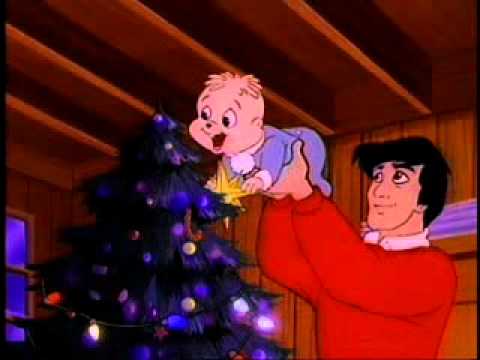

Remember This? ‘The Chipmunk Song’… #1 December 1958
Remember This? ‘The Chipmunk Song’… #1 December 1958
Did you know that David Seville was the stage name for Ross Bagdasarian? Bagdasarian was creator and voice of The Chipmunks. The year before he had a hit with ‘The Witch Doctor’…Oh e oo aha aha, ting tang walla walla bing bang, etc.
The tape machine Bagdasarian used to record the chipmunk sound on was a variable speed, Tape-O-Matic “Voice of Music” reel-to-reel recorder. The key words here are variable speed. People tried to emulate his sound, but without the variable speed function, you just couldn’t get there.
This song was #1 Christmas of 1958 and won two Grammys, one of which was for technology. This is the original version with some interesting video editing. Enjoy, share and sing along!
http://www.youtube.com/watch?v=whY9MKlvisI
My 3rd fan made Chipmunk video featuring clips from various Chipmunks Christmas special episodes and shows where David Seville and The Chipmunks celebrate Ch…
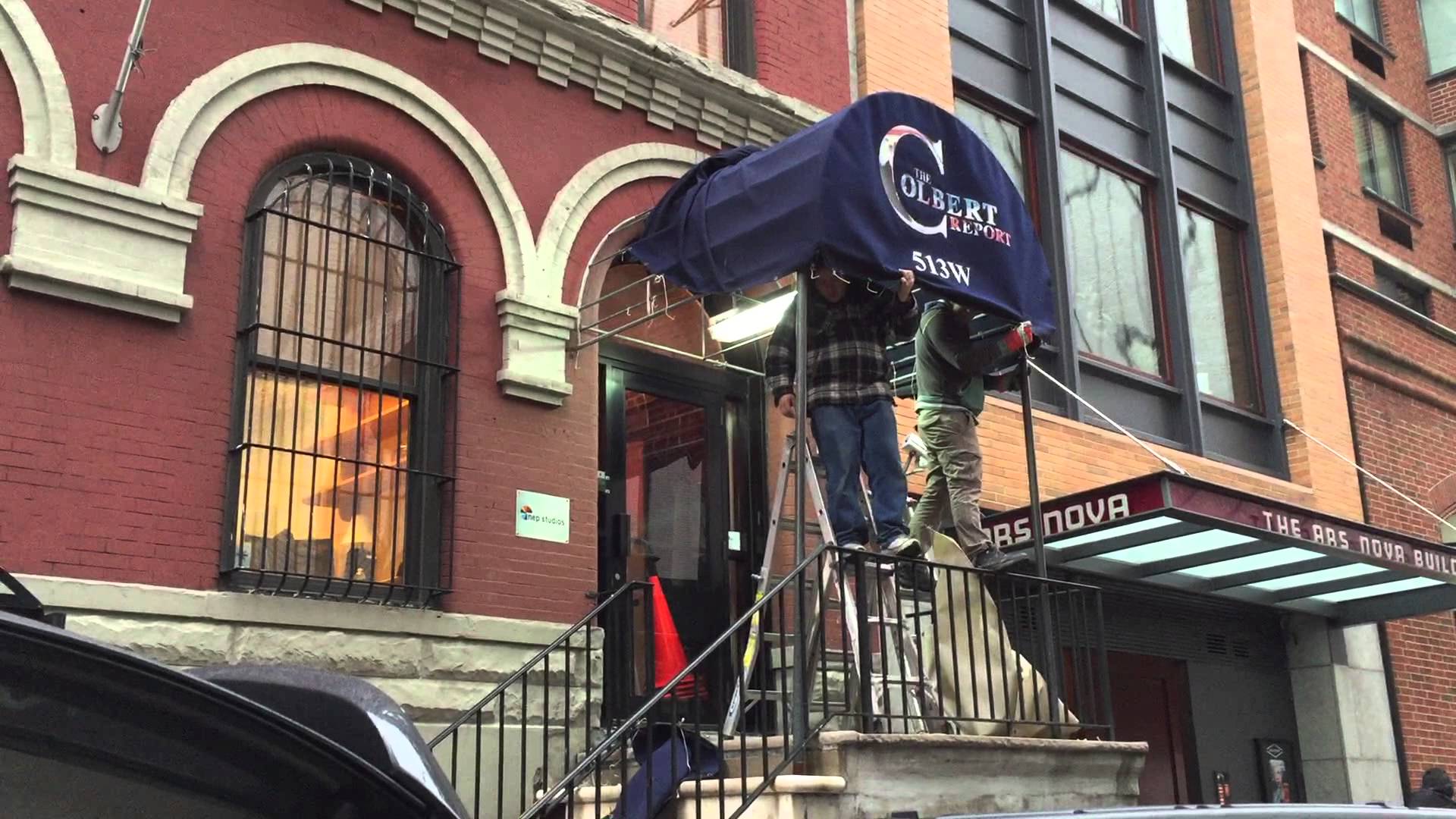

Colbert Awning Comes Down At The Home Of Truthyness…NEP Studio 54
Colbert Awning Comes Down At The Home Of Truthyness…NEP Studio 54
https://m.youtube.com/watch?v=49oALVGxIgU&feature=youtu.be
The Colbert Report awning comes down from it’s New York studios, signaling the end of the show – December 22, 3015


The Story Behind The Classic…”Have Yourself A Merry Little Christmas”
The Story Behind The Classic…”Have Yourself A Merry Little Christmas”
This, one of my favorites, was introduced by Judy Garland in the 1944 movie musical ‘Meet Me in St. Louis’. The song was written by Hugh Martin and Ralph Blane for a scene were Garland’s character, Esther, sings the bittersweet song to her little sister, trying to cheer her up as both lament their family’s move away from their hometown. But Garland and director Vincent Minnelli weren’t happy with Martin’s early, darker lyrics.
These included lines that Martin would later describe as ”hysterically lugubrious,” like ”Have yourself a merry little Christmas/It may be your last…. Faithful friends who were dear to us/Will be near to us no more.”
Martin initially refused to revise the lyrics, but a blue talking to from actor Tom Drake set him straight. “He said, ‘You stupid son of a bitch!'” Martin recollected, “‘You’re gonna foul up your life if you don’t write another verse of that song!”’ Ultimately, Martin gave the song a more hopeful leaning, first for the movie then again in 1957 at the request of Frank Sinatra. For Ol’ Blue Eyes, he changed “We’ll have to muddle through somehow” to the more jolly “Hang a shining star upon the highest bough.” The song has since became a standard, in both forms. Enjoy, share and sing along! -Bobby Ellerbee
http://www.youtube.com/watch?v=MKG5X0QMSWA
From the movie “Meet me in St. Louis” (1944). Con Subtitulos en Español


The Story Behind The Classic…”The Christmas Song”
The Story Behind The Classic…”The Christmas Song”
The Christmas Song was written in 1944 by musician, composer, and vocalist Mel Tormé and Bob Wells. The song was written during an incredibly hot summer in an effort to stay cool by thinking cold thoughts.
“I saw a spiral pad on his Bob’s piano with four lines written in pencil”, Tormé recalled. “They started, ‘Chestnuts roasting…Jack Frost nipping…Yuletide carols…Folks dressed up like Eskimos. Bob didn’t think he was writing a song lyric. He said he thought if he could immerse himself in winter he could cool off. Forty minutes later “The Christmas Song” was complete.”
The Nat King Cole Trio first recorded the song early in 1946, and disregarding objections of his label Capitol Records, a second recording was made the same year utilizing a small string section, this version became a massive hit on both the pop and R&B charts.
Cole again recorded the song in 1953, using the same arrangement with a full orchestra arranged and conducted by Nelson Riddle, and once more in 1961, in stereo with orchestra conducted by Ralph Carmichael which is arguably the most popular version of this Christmas classic. Enjoy, share and sing along! -Bobby Ellerbee
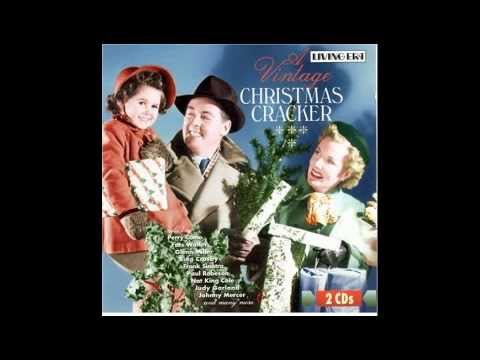

The Story Behind The Classic…”Santa Clause Is Coming To Town”
The Story Behind The Classic…”Santa Clause Is Coming To Town”
Below is the first known recording of the song which came only days after it debuted. “Santa Claus Is Coming To Town” was first performed by Eddie Cantor on his radio show in November 1934. The next day, there were orders for 100,000 copies of sheet music and 400,000 copies sold by Christmas of that year.
As the story goes, James “Haven” Gillespie was a vaudevillian-turned-songwriter who’d fallen on hard times, both financially and personally. Gillespie got the call to pen a Christmas tune for Cantor just after learning his brother had died.
Initially, he rejected the job, feeling too overcome with grief to consider penning a playful holiday ditty. But a subway ride recollecting his childhood with his brother and his mother’s warnings that “Santa was watching” changed his mind. He had the lyrics in 15 minutes, then called in composer John Coots to make up the music that would become a huge hit within 24 hours of its debut. Enjoy, share and sing along! -Bobby Ellerbee
http://www.youtube.com/watch?v=kbePb9xNNII
By John Frederick Coots & Haven Gillespie. The first recording of this song. Oct. 24, 1934. New York. from A Vintage Christmas Cracker. Living Era CD AJS 275…
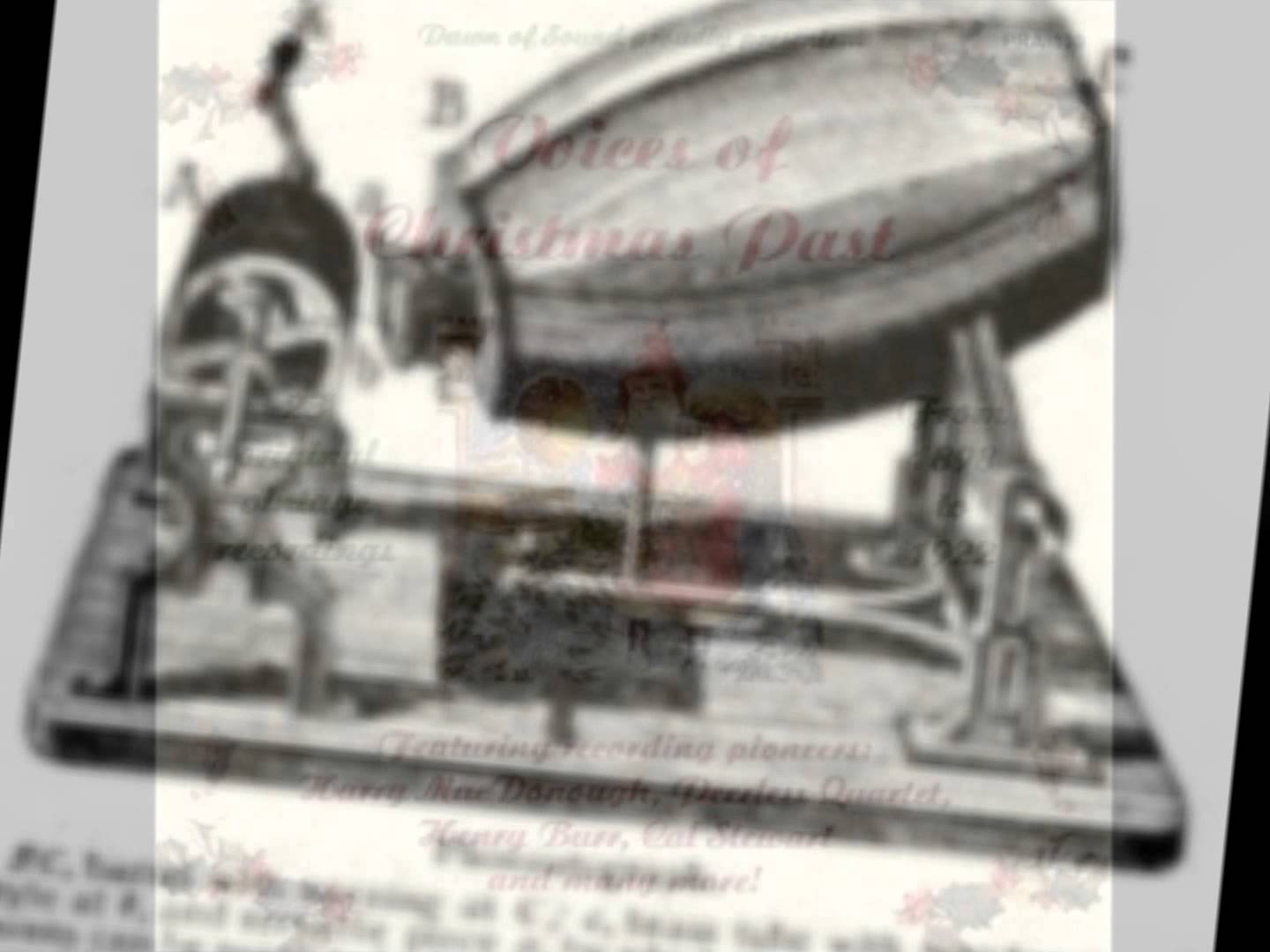

Ultra Rare! The 1st Christmas Song Ever Recorded…Jingle Bells, 1898
Ultra Rare! The 1st Christmas Song Ever Recorded…Jingle Bells, 1898
We’ll get to how J. S. Peirpont came to write the song in Savannah, Georgia in a moment, but first a note on the recording. As noted in the video, a banjo player named Will Lyle made an instrumental version in 1889, but this 1898 Edison Cylinder recording by The Edison Male Quartet is believed to be the first Christmas song ever recorded.
The words and music to the famous Christmas carol “Jingle Bells” were written in 1857 by organist and choir director James Pierpont for a Thanksgiving church service in Savannah, GA. It was so well received that the children were asked to repeat the performance at the Christmas service that year, and it has remained a Christmas standard ever since. The sheet music was first published in 1857 by Oliver Ditson with its original title “The One Horse Open Sleigh”. It was reissued two years later with only one title change chosen by the public…“Jingle Bells.”
James Pierpont was born in 1822 in Massachusetts the son of an ardent abolitionist. In the 1850’s he moved to Savannah, Georgia, joining his brother John who ministered to Savannah’s Unitarian congregation. James took a post as the organist and music director of the church and it during the fall of 1857, with Pierpont living in the south, that he began writing of his New England Christmases and longing for the snow and traditional New England customs.
At the outset of the Civil War, he joined the Isle of Hope Volunteers to the Confederacy, the Fifth Georgia Calvalry. Pierpont survived the war and lived until 1893 when he passed away in Winter Haven, FL. He was buried in Laurel Grove beside his brother-in-law Thomas who had been killed in the first battle of Bull Run. The family would again come to great national prominence through the work of James’ nephew, famed capitalist J. Pierpont Morgan.
In the period of 1890 through 1954, “Jingle Bells” was in the top 25 most recorded songs in history beating out “Blue Skies”, “My Old Kentucky Home”, “I Got Rhythm”, “The Stars and Stripes Forever” and “Georgia On My Mind”. Enjoy, share and sing along! -Bobby Ellerbee
http://www.youtube.com/watch?v=tqbtlzPFa4w
http://davidneale.eu/elvis/originals/index.html Written by: J. S. Pierpont Originally recorded by Will Lyle in 1889 (Hear Elvis’s version on: Home Recordings…
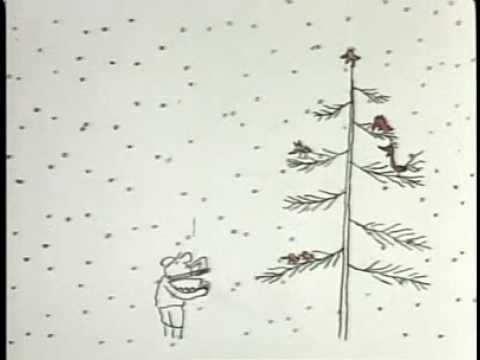

Remember This Classic CBS Holiday ID From 1966?
Remember This Classic CBS Holiday ID From 1966?
Back then, R. O. Blechman was best known for his magazine cover designs, especially his many ‘The New Yorker’ covers. CBS commissioned him to design a classy holiday ID with Willis Pyle doing the animation. Thanks to Alec Cumming for sharing this with us. Enjoy and share! -Bobby Ellerbee
http://www.youtube.com/watch?v=MUWMjUjit_U&feature=share
Can you believe that there once was a time when network television aired classy holiday interstitials like this ? Designed by R.O. Blechman and animated by W…
NBC’s First Cameramen…Albert Protzman And Don Pike
NBC’s First Cameramen…Albert Protzman And Don Pike
The man without glasses is NBC’s first ever cameraman, Albert Protzman. The second camera hire was Don Pike who is seen in this beautiful color closeup of an RCA A500 Iconoscope camera in NBC Studio 3H. Pike went on to become either the first or second ever technical director in television.
The dark umber gray cameras were the first models and went into service in 1935 when 3H was converted from an NBC radio studio to an RCA experimental television studio that year. By 1937, there was a better Iconoscope tube and I think the cameras were refitted with the new tube and at the same time, painted silver to reflect some of the heat from the studio lights.
The last photo of the RCA TK10 is I think Albert Protzman as lead cameraman on the 1951 production of ‘Ahmal And The Night Visitor’ in Studio 8H. I think Protzman stayed behind the camera for many years but later became a technical director also. By the way, NBC legend Heino Ripp was also on this crew as a utility man and sometime camera man and later, TD supreme! Enjoy and share! -Bobby Ellerbee
Bob Hope Special Shot With RCA TK60s, Excellent Crisp Video
Just For Fun…Bob Hope Special Shot With RCA TK60s, Excellent Crisp Video
Above is a Hope special from September 25, 1964. Although it was shot in black and white, it looks spectacular! This was also done in Studio 1 at NBC Burbank, like the first color special he did there as seen in the post just before this.
Below are some rare photos of the TK60s in Studio 1. This camera used the new 4.5 inch Image Orthicon tube. The TK60 actually debuted in 1960 as the TK12, but had a few issues. By ’63, RCA had fixed the problems and re-released it as the TK60. By this time though, color was making great headway and broadcasters were reluctant to buy monochrome cameras, but many did.
It was an excellent camera and it’s only rival was the Marconi Mark IV which used the same tube. By the way, Milton Berle, Phyllis Diller, Dean Martin, and Jack Benny are Bob’s guests on the special which is quite good. Enjoy and share! -Bobby Ellerbee


Bob Hope’s First Color Special…Christmas 1965
Bob Hope’s First Every Color Special…Christmas 1965
Even though NBC had wanted him to do color shows earlier, Hope resisted because he was not only the star…he was the producer too, and color had higher production costs.
This special with Jack Benny, Bing Crosby, Janet Leigh and Nancy Wilson was shot in Studio 1 at NBC Burbank and as always, has beautiful color form the RCA TK41s. Just for fun, I am also going to post one of his specials shot with the RCA TK60s. Enjoy and share! -Bobby Ellerbee
Keeping “Warm” This First Day Of Winter…NBC Studio 1A Control Room
An Ironic (And Moe-ronic) Christmas Wish From The Three Stooges…
An Ironic (And Moe-ronic) Merry Christmas Wish From The Three Stooges…
Moses Harry Horwitz, Louis Feinberg and Jerome Lester Horwitz. No matter the holiday you celebrate, may it be filled with joy! -Bobby Ellerbee
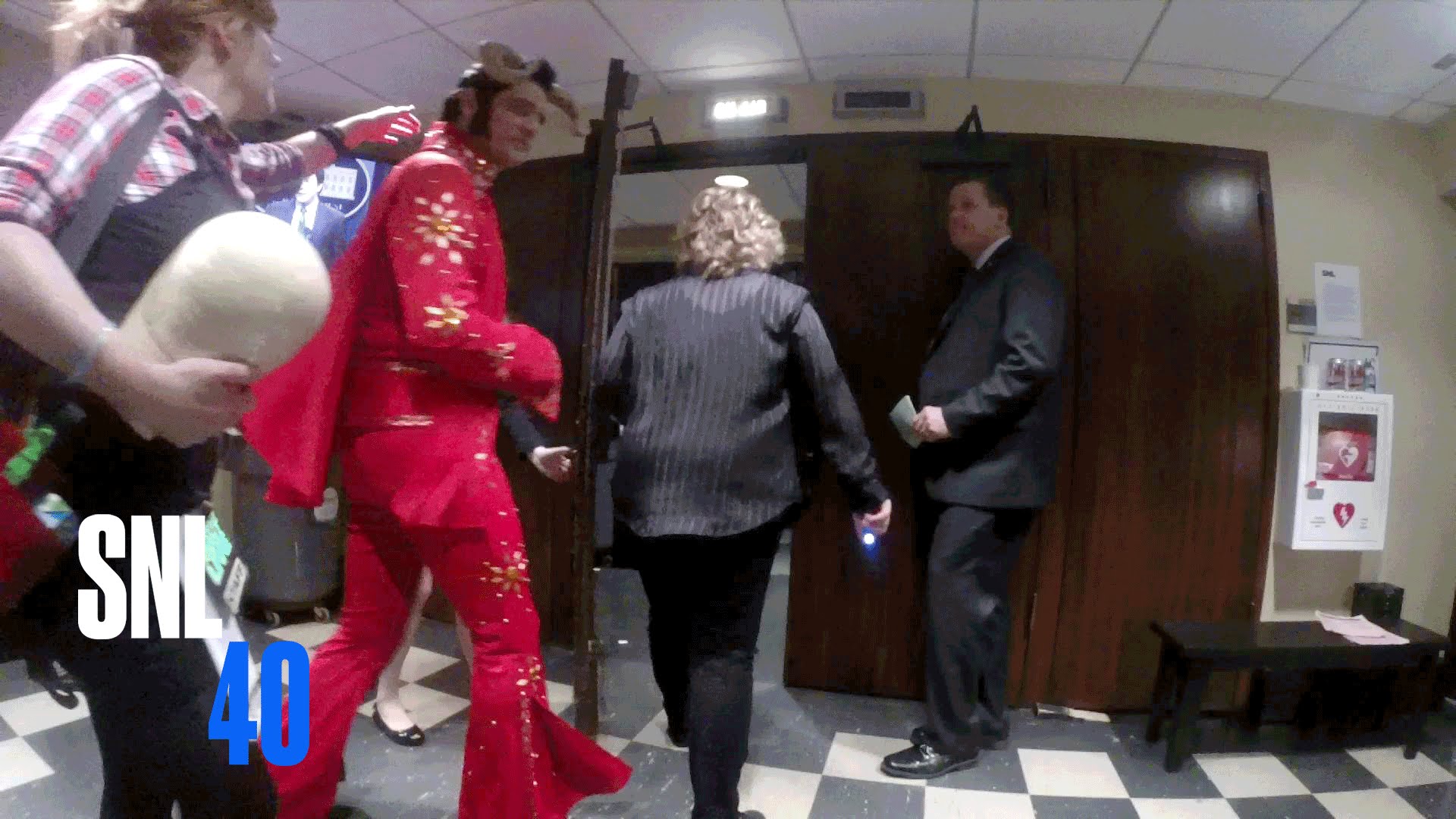

New ‘Saturday Night Live’ Time Lapse…From The Page Desk
New ‘Saturday Night Live’ Time Lapse…From The Page Desk
This is from the Halloween show this year with Jim Carry hosting. You will be quite surprised around the 1:40 mark! That’s when a pedestal camera leaves Studio 8H. So, either the studio is getting crowded or there will be a later live shot in the hallway. Enjoy and share! -Bobby Ellerbee
http://www.youtube.com/watch?v=3oRRYJs-Ec0
Take a seat at the Studio 8H page desk and watch Saturday Night Live in action. Shot during the October 25 show, hosted by Jim Carrey with musical guest Iggy…
‘Saturday Night Live’…Behind The Scenes Of A Typical Week
This is the 8H studio map, the rehearsal and run sheets for the April 12, 2014 show with Seth Rogen as host. At the link above is a clip of the Undercover Sharpton sketch you should watch for context.
Notice on the map that sketch sets are often set in front of other sketch sets. For instance, in the Sharpton sketch, on the left in front of Stage 6 we see where the van was and across the floor in front of Stage 4B, we see the Sharpton Mob Bar interior location. As you can see on the blue sheet, some of the Sharpton effects shots were videotaped on Friday.
By having the 8H stage map we can more easily see the complexity of the production and the importance of camera blocking and rehearsals. The hand written notations from the cameramen show them where they need to be. TNG is the abbreviation for the retractable tongue on the front of the HB, or home base stage where the monologue and Weekend Update are done.
Stage 1 – 6 are constant week to week production areas. Stage 2 is always for musical guests only and homebase is for always for the house band, but everything else is always in flux.
As you can see on the white Thursday sheet, one of the first orders of business is loading in the guest band, sound check and then shooting promos. After that, camera blocking with the actors starts.
On the blue Friday sheet, you can see how the blocking and rehearsals continue with pre taping going on for scenes with a lot of effects.
The pink sheet is the Saturday dress rehearsal with the first audience entering around 7PM and the runthrough starts about 8 and runs till 10 or so. After that, Lorne Michaels and the writers huddle to cut the some sketches. They have been watching from Lorne’s perch under the bleachers near the center door.
On the green air rundown, you can see on the right which sketches were cut and how the order has changed from dress rehearsal. Remember…everybody has to be on the same page. Literally! The actors, the 30 or so stage hands moving scenery and the six cameras and two sound boom teams all have to be at the right spot at the right time.
I have had the pleasure to see this up close and personal and there is not a more impressive ballet of men and machines, art and artists and sets and scenery than at ‘Saturday Night Live’! This is a time lapse video of the show just two weeks before Seth Rogan hosted!
Thanks to ALL the SNL casts and crews for 40 year of unforgettable memories! Enjoy and SHARE! -Bobby Ellerbee


December 21, 1937…’Snow White’ Debuts
December 21, 1937…’Snow White’ Debuts + TCM Disney Special News
First…tonight on Turner Classic Movies, nine hours of Disney treasures are rolled out starting at 8 PM Eastern. More at this link…set your DVRs.
http://www.orlandosentinel.com/entertainment/tv/tv-guy/os-disney-treasures-get-tcm-showcase-20141219-post.html
This great 8 minute clip tells a lot of the story of the making of the film and at 5:20, we see the Hollywood debut footage. At 7:00, we see the original 1937 trailer. Enjoy and share! -Bobby Ellerbee
http://www.youtube.com/watch?v=65SfVyE7Y3E
Premier footage, as well as a behind-the-scenes look of the making, of Walt Disney’s first feature-length animated film: Snow White and the Seven Dwarfs. www…
December 20, 1954…Jackie Glea$on & Buick $ign Large$t Ever TV Deal
December 20, 1954…Jackie Glea$on & Buick $ign Large$t Ever TV Deal
In 1954, General Motors Buick brand signed Jackie Gleason to one of the largest contracts ever entered into with an entertainer at that time.
Buick had just dropped their sponsorship of Milton Berle on NBC and were looking for a big play. Gleason’s one hour live show on Saturday night was their target, and especially The Honeymooners sketches which, since 1949, had been an audience favorite even when the show was at Dumont. Gleason moved to CBS in 1951 and until ’54, was the one hour variety format which returned immediately after the filmed Honeymooners episodes ended.
The three-year contract, reportedly valued at $11 million, was one of the largest in show business history. It called for Gleason to produce 78 filmed episodes of ‘The Honeymooners’ over two seasons, with an option for a third season of 39 more.
He was scheduled to receive $65,000 for each episode ($70,000 per episode in the second season), but had to pay all production costs out of that amount. Art Carney received $3,500 per week, Audrey Meadows received $2,000 per week, and Joyce Randolph (who did not appear in every episode) received $500 per week. Production for The Honeymooners was handled by Jackie Gleason Enterprises, Inc., which also produced the show’s lead-in, ‘Stage Show’, starring The Dorsey Brothers. Reportedly, only Audrey Meadows, who later became a banker, received residuals by inserting language to that effect into her contract.[citation needed]
The first episode of the new half-hour series aired Saturday, October 1, 1955, at 8:30 pm Eastern Time (during prime time), opposite ‘Ozark Jubilee’ on ABC and ‘The Perry Como Show’ on NBC. As it was sponsored by Buick, the opening credits originally ended with a sponsor identification by announcer Jack Lescoulie (“Brought to you by … Your Buick Dealer. And away we go!”), and the show concluded with a brief Gleason sales pitch for the company. All references to the car maker were removed when the show entered syndication in 1957.
In February 1956, the show was moved to the 8 pm time slot, but had already started to lose viewers to the hugely popular ‘Perry Como Show’. Gleason’s writers had also begun to feel confined, and Gleason felt that they were starting to run out of original ideas.
After just one season, Gleason and CBS agreed to cancel ‘The Honeymooners’, which aired its 39th and last original episode on September 22, 1956. In explaining his decision to end the show with $7 million remaining on his contract Gleason said, “the excellence of the material could not be maintained, and I had too much fondness for the show to cheapen it”. Gleason later sold the films of the “Classic 39” episodes of the show to CBS for US$1.5 million. Enjoy and share! -Bobby Ellerbee
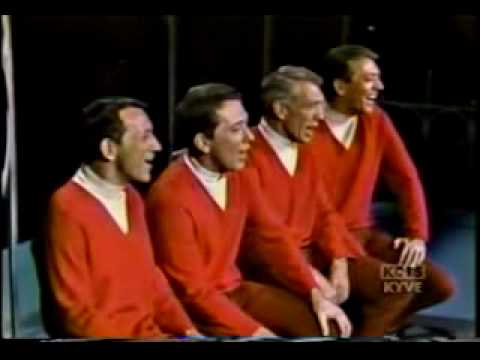

Just For Fun…Best Version Of “Winter Wonderland” Ever
Just For Fun…Best Version Of “Winter Wonderland” Ever
Andy Williams was a huge talent by every measure, but his brothers taught him how to sing. Together, it’s like listening to a quad version of Andy…and about the best you’ll ever hear. By the way, before Andy went solo, The Williams Brothers were one of the biggest acts in the business and in their day, were as big as The Osmonds became and set the pace for them. Enjoy and share! -Bobby Ellerbee
December 20,1938…Vladimir Zworykin Patented The Iconoscope
December 20,1938…Vladimir Zworykin Patented The Iconoscope
Although there was controversy over a lot of patents and inventions in electronic television between Philo Farnsworth and Zworykin and RCA, there is no contention over the development of the Iconoscope.
Zworykin had built one as early at October 1931. At the 1936 Berlin Olympic games, two of the three cameras there were using Iconoscope tubes and one used the Farnsworth Image Dissector tube.
Below we see Zworykin with some of his earliest Iconoscope models. Next is a rare photo of one of NBC’s first cameramen, Don Pike operating one of the three prototype Iconoscope cameras in NBC Studio 3H around 1936. For good measure, I’ve also included at photo of Philo Farnsworth with one of his early Image Dissector cameras. Enjoy and share! -Bobby Ellerbee
Stephen & Friends – “We’ll Meet Again”
BEST SEND OFF EVER! Final Minutes Of Colbert Video! Must See!
There are more famous faces here than you can count, and 5 times as many as we saw in the photo from earlier this morning! Enjoy and SHARE! -Bobby Ellerbee